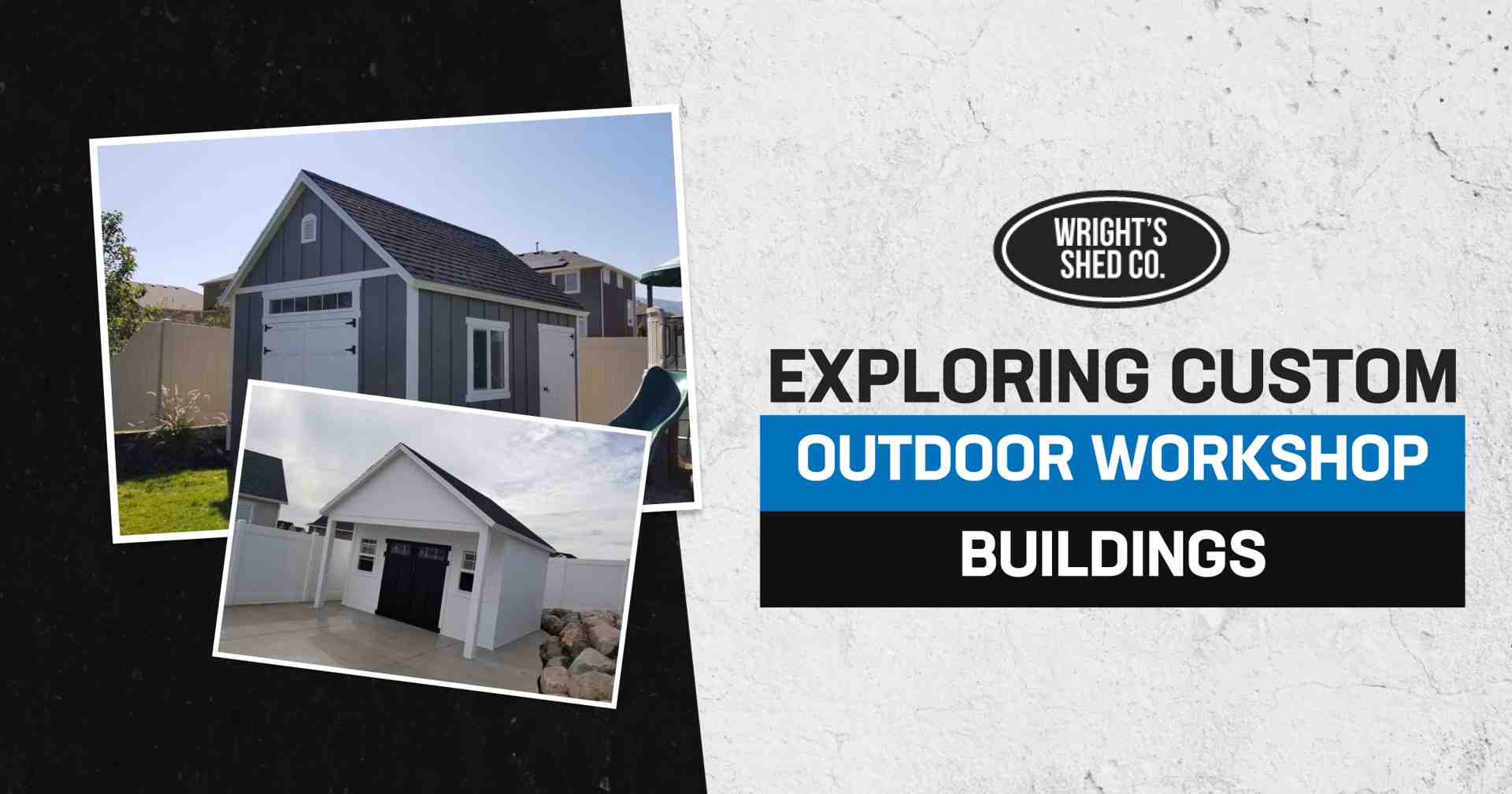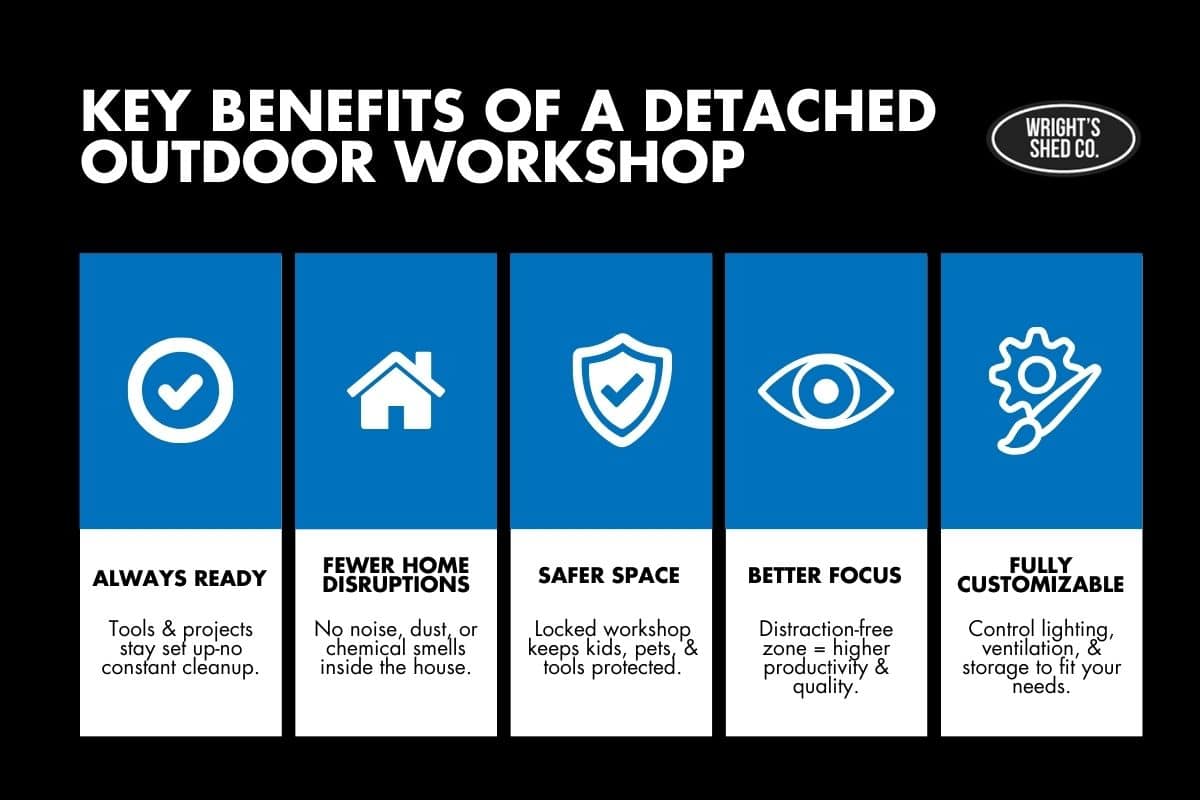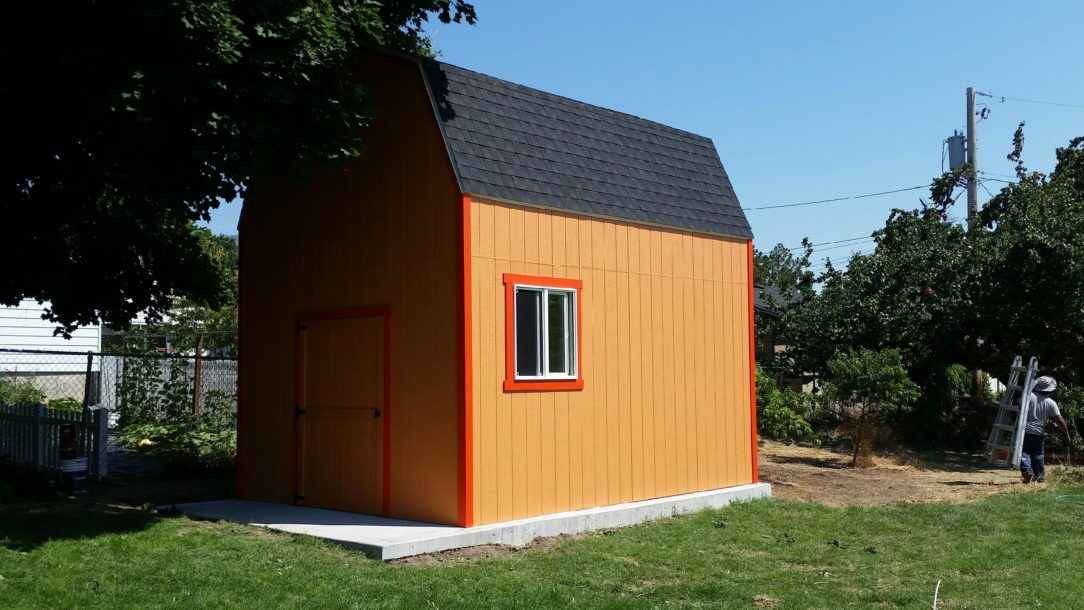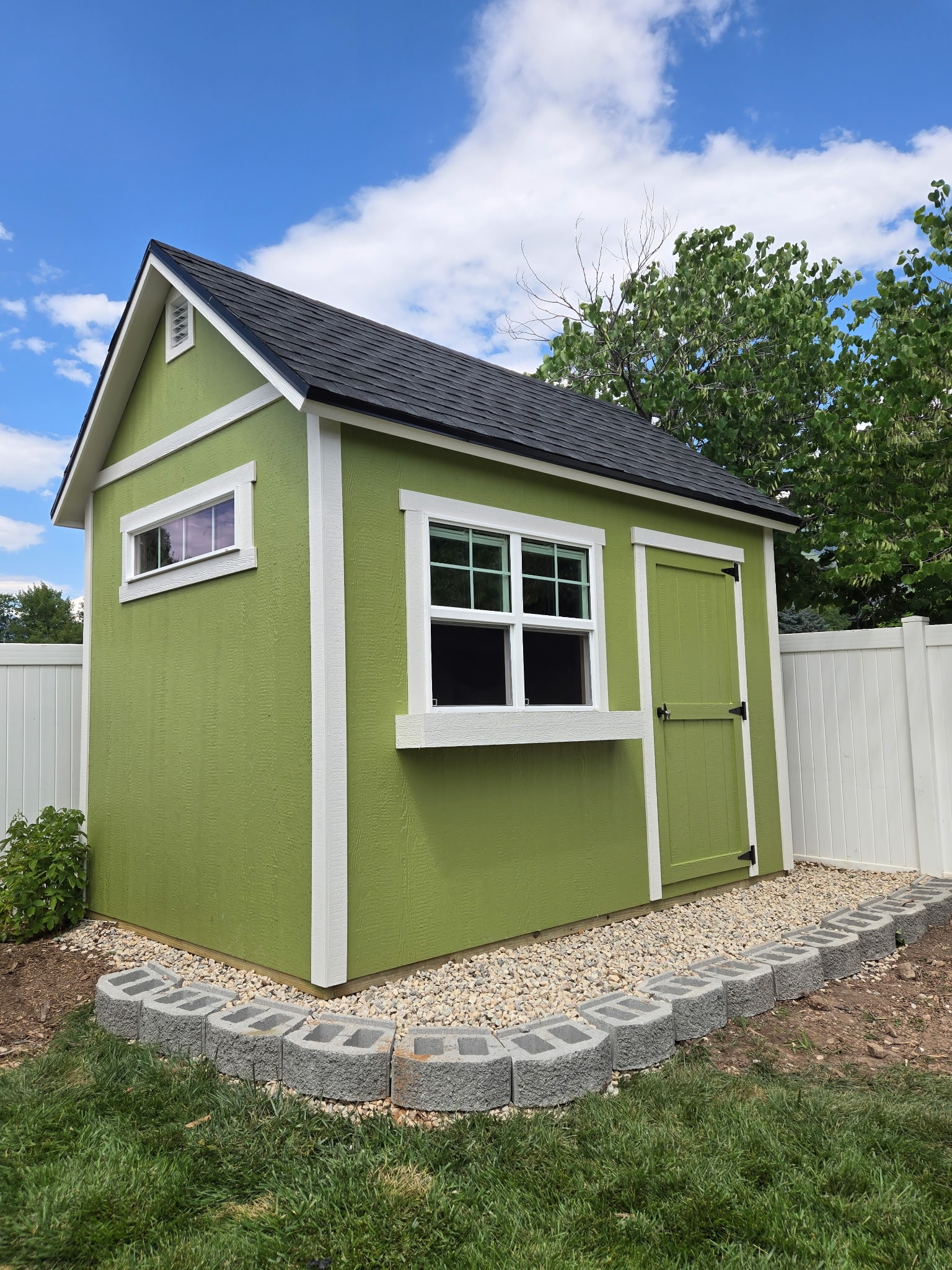Why Outdoor Workshop Buildings Are Changing Home Projects
Outdoor workshop buildings give homeowners a dedicated space for hobbies and DIY projects, keeping clutter, noise, and dust out of the main house. These detached structures offer the freedom to work at any hour without disturbing family life.
Top benefits of outdoor workshop buildings:
- Dedicated workspace: No more clearing the garage or kitchen table.
- Noise containment: Work late without waking the family.
- Hobby protection: Secure storage for tools and projects.
- Increased property value: Quality structures boost home worth.
- Flexible scheduling: 24/7 access to your workspace.
Customers consistently praise well-built outdoor workshops for their versatility.
Whether you’re a woodworker, mechanic, or artist, the right outdoor workshop building transforms how you approach your passions.
Why Invest in a Detached Workshop?
Picture this: it’s 10 PM, and you’re ready to tackle a woodworking project. In an attached garage, you’d worry about waking the kids with noise and sawdust. With a detached outdoor workshop building, you simply walk outside and get to work. That’s the freedom of a detached workshop, it’s about reclaiming your home and pursuing what you love without compromise.
When you contain hobbies in a separate space, noise containment lets your family relax in peace while you run a table saw. Fume control keeps chemical odors from seeping into your living areas. Clutter separation is another key benefit, as tools and projects stay in the workshop, not on the kitchen counter. The 24/7 access allows you to work whenever you want, improving your work-life balance by truly separating creative time from family time.
Key Benefits of Detached Outdoor Workshop Buildings
A dedicated space means your tools and projects stay ready for you, eliminating setup and cleanup time so you can pick up right where you left off.
Minimized home disruptions go beyond noise. Fine dust and chemical smells won’t enter your home’s HVAC system, allowing your family to go about their day undisturbed.
Improved safety is crucial. A locked workshop keeps children and pets away from dangerous equipment and secures your valuable tools.
Increased focus comes naturally in a space free from household distractions, improving your productivity and the quality of your work.
Flexible work hours and a customizable environment let you install the specific lighting, ventilation, and storage you need without impacting the rest of your home.
Attached vs. Detached: Making the Right Choice
The choice often comes down to convenience vs. separation. An attached workshop is convenient, but that convenience comes with the cost of noise, dust, and fumes entering your home.
Cost comparison often favors detached buildings. They don’t require complex integration with your home’s structure and often have more predictable costs and simpler construction, especially with prefab options.
Zoning differences can be significant. Many areas have more lenient setback and size restrictions for detached accessory structures compared to home additions.
Noise and dust considerations are paramount for serious hobbyists. Sound and vibration travel easily through shared walls, and dust can spread throughout your home’s air system.
Security implications are also a factor. A well-built detached workshop with quality locks protects your tools without creating a potential entry point into your home. After building outdoor workshop buildings for over 25 years, we’ve seen how a detached structure improves the enjoyment of any craft.
Choosing Your Ideal Outdoor Workshop Buildings: Types and Materials
Selecting the perfect outdoor workshop building is a major decision. Based on my experience helping thousands of customers since 1997, the right choice depends on your budget, DIY interest, and how you’ll use the space.
Today’s outdoor workshop buildings offer a wide range of solutions. Whether you prefer a quick prefab kit or a fully custom design, there’s an approach that fits your timeline and vision. For inspiration, our guide on Shed Styles: Exploring Unique, Versatile Options showcases the variety available.
Exploring Workshop Building Types
Your construction choice impacts your timeline and final cost. Here are the most popular options.
Prefab workshop buildings balance convenience and customization. Sections are built in a controlled environment and assembled on-site, ensuring consistent quality and a predictable timeline, often at a lower cost than a full custom build.
For those with a precise vision, custom built storage sheds offer ultimate personalization. Every detail is chosen for your specific needs. While it costs more and takes longer, the result is a workshop that perfectly fits your workflow.
Panelized systems offer a middle ground. They arrive as numbered panels that fit together, making assembly manageable for skilled DIYers while providing the strength of a traditional build.
Comparing Common Building Materials
The material you choose for your outdoor workshop building is a critical decision affecting maintenance, appearance, and value.
Wood is the classic choice for its beauty and customizability. It blends naturally with most homes and allows for easy modifications. However, it requires annual treatment with a preservative and waterproof coating to prevent rot and insect damage.
Metal buildings, particularly galvanized steel, offer maximum durability with minimal maintenance. They resist rot, pests, and fire, requiring only occasional cleaning. While the look is industrial, they are incredibly strong and ideal for harsh weather.
Resin and plastic are low-maintenance, affordable, and lightweight options. They resist fading, rotting, and rusting, and assembly is often simple. However, they offer less customization and may not feel as substantial as wood or metal.
At Wright’s Shed Co., we deliver quality regardless of the material. Our buildings include upgraded features as standard and are backed by warranties, ensuring your workshop is built to last.
Planning Your Workshop: Location, Foundation, and Permits
While it’s exciting to choose your outdoor workshop building, proper planning is essential to avoid future headaches. After 25 years of experience across Utah, Idaho, Iowa, and Nebraska, I know that getting the location, foundation, and permits right is the key to a successful project. For more details, see our guide on How to Build an Outdoor Storage Shed.
Site Selection and Foundation
Choosing the right spot for your outdoor workshop building involves several factors. Accessibility is key, ensure you can easily move supplies and equipment to the site. The ground must be level to prevent structural stress and issues with doors and windows. Good drainage is also critical; choose a spot that naturally carries water away from the foundation. If you plan to run electricity, consider the site’s proximity to your home’s electrical panel to simplify installation by a licensed electrician.
For the foundation, you have three main options. A concrete pad foundation is the most stable and durable base, ideal for heavy equipment. A gravel foundation provides excellent drainage at a lower cost. Pier blocks can work for smaller buildings and offer good airflow, but they require precise leveling.
Navigating Permits and Legal Requirements
Dealing with permits upfront prevents major problems later. Local building codes ensure your workshop is safe and durable. These rules cover everything from foundation depth to roofing materials. Be sure to check for size restrictions and setback requirements, which dictate how large your shed can be and how close it can be to property lines.
If you have a Homeowners Association (HOA), review their guidelines on materials, colors, and placement. Contact your local planning department early to understand the specific requirements for your project. While we build high-quality structures, ensuring local compliance is your responsibility. Regulations can vary widely by location, as seen with systems like the California Proposition 65 Warning.
Budgeting for Your Workshop
Your budget for an outdoor workshop building should include more than just the structure. Kit costs can range from around $1,800 to over $5,900, while custom build costs are typically higher but include our upgraded features as standard.
Factor in foundation expenses, which can be significant for a concrete pad, and mandatory permit fees. Finally, budget for finishing costs like running electricity, insulation, lighting, and climate control. These upgrades are what turn a simple building into a true, comfortable workshop. We believe in transparent pricing and offer financing options to help make your dream workshop a reality.
Customizing and Maintaining Your Workshop
Once your outdoor workshop building is in place, you can customize it into your perfect creative sanctuary. After 25+ years in this business, I’ve seen that the best workshops are designed around the owner’s specific needs, whether for a hobby space, home office, or specialized craft. For ideas, check out our Shed Organization Hacks.
Designing for Your Specific Needs
Customizing your outdoor workshop building makes it more productive and enjoyable.
- Size and layout: A 10’x12′ space is a good starting point, but your hobby dictates the ideal size. A woodworker might need a 12’x16′ workshop, while a car restorer may require a larger 14’x24′ garage-style building.
- Door and window placement: Double doors are essential for moving large items. Strategically placed windows provide natural light where you need it most.
- Electrical packages: Running electricity is a common and vital upgrade. Always hire a licensed electrician to ensure safety and code compliance. A typical package includes outlets, overhead lighting, and switches.
- Insulation and climate control: If you plan to use your workshop year-round, insulation is highly recommended. It regulates temperature, reduces energy costs, and dampens sound. Learn more about Designing a Shed for Work.
- Workbenches and shelving: Maximize your space with vertical shelving and robust workbenches sized for your projects. Many of our models include extensive built-in storage.
- Ventilation: Proper ventilation from windows, vents, or exhaust fans is crucial for maintaining good air quality, especially when working with dust or fumes.
Maintenance Needs for Different Outdoor Workshop Buildings
A well-maintained outdoor workshop building will last for decades. Maintenance varies by material.
- Wood maintenance: To prevent rot and maintain the warranty, wood requires annual treatment with a preservative and a waterproof top coat. Address any cracking or warping promptly.
- Metal maintenance: Our galvanized steel buildings are simple to maintain. Periodically wash the exterior and check for rust on any scratches.
- Resin maintenance: These plastic buildings are virtually maintenance-free, requiring only an occasional wash. Check for cracks after severe weather.
- Roof inspection: Regularly check your roof for loose shingles, damaged panels, or potential leaks to prevent water damage.
- Gutter cleaning: Keep gutters clear to ensure water flows away from your foundation.
A little preventive care protects your investment and keeps your workshop ready for your next project.
Frequently Asked Questions about Outdoor Workshop Buildings
After helping customers across Utah, Idaho, Iowa, and Nebraska create their dream workshops since 1997, we’ve noticed the same thoughtful questions come up again and again. Here are the answers to some common concerns.
What’s the best size for a one-person workshop?
For most solo hobbyists, a 10’x12′ (120 sq. ft.) workshop is a great starting point. This provides enough room for a workbench, tool storage, and space to move around. However, your specific hobby is the most important factor. A woodworker with large equipment might need a 12’x20′ space or larger to work safely and efficiently. It’s always wise to plan for a little more space than you think you need.
Do I need to insulate my outdoor workshop?
If you plan to use your outdoor workshop building year-round, insulation is a highly recommended investment. It provides comfort by regulating temperature, which also protects your tools from damage caused by extreme heat or cold. Insulated workshops are more energy-efficient to heat or cool, saving you money. Crucially, insulation also provides sound dampening, so your work won’t disturb your family. Insulation transforms a basic shed into a truly functional and comfortable workspace.
Can I run electricity to my outdoor workshop?
Yes, and for most workshops, electricity is essential. Power tools, lighting, and climate control all require power to create a safe and functional workspace. It is critical to hire a licensed electrician for this job. A professional will ensure the installation is safe, up to code, and designed to handle your power needs. Many of our workshop models can be prepped for electrical installation, which can simplify the process for your electrician.
The Long-Term Value of Outdoor Workshop Buildings
Building an outdoor workshop building represents more than just adding square footage to your property, it’s about creating a sanctuary for your creativity and reclaiming your home’s peace and quiet. Throughout this guide, we’ve explored how these dedicated spaces transform the way you approach your hobbies and projects.
The benefits speak for themselves. Noise containment keeps your family happy while you work late into the evening. Dedicated workspace means no more clearing off the kitchen table or fighting for garage space. Fume and dust control protects your home’s air quality, while 24/7 access gives you the freedom to create whenever inspiration strikes.
Whether you choose the efficiency of a prefabricated structure or the precision of a custom build, success depends on thoughtful planning. A solid foundation, whether concrete, gravel, or pier blocks, ensures your investment stands the test of time. Proper site selection, attention to local permits, and realistic budgeting set the stage for a workshop that truly serves your needs.
The long-term value of outdoor workshop buildings extends far beyond its initial cost. It’s an investment in your creative freedom, your property value, and your quality of life. Our customers consistently tell us how their workshop has changed their relationship with their hobbies, giving them space to think, create, and build without compromise.
At Wright’s Shed Co., we understand that every craftsperson, artist, and DIY enthusiast has unique needs. Since 1997, we’ve been helping customers across Utah, Idaho, Iowa, and Nebraska create their perfect workspace. Our commitment to quality construction and upgraded features as standard means your workshop will serve you well for decades to come, backed by our warranty.
Your dream workshop is waiting. For a comprehensive look at your options, explore our pricing page and take the first step toward the creative freedom you deserve.





